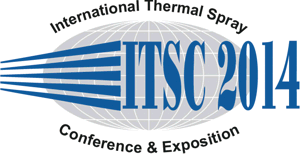
|
3616 |
|
Friday, May 23, 2014, Hall H2 9:00 AM Power Generation - Steam |
|
Wear resistant HVOF coatings for high temperature applications |
|
Sarka Houdkova* / VZU Plzen s.r.o., Czech Republic Michaela Kasparova/ VZU PlzeH, s.r.o., Czech Republic Zdenek Cesanek/ VZU Plzen, s.r.o., Czech Republic Jan Schubert/ VZU Plzen, s.r.o., Czech Republic |
|
The requirement of increasing the parts surface wear resistance is, besides the corrosion and oxidation resistance, the most often in the surface treatment industry. To fulfill this requirement, various materials can be deposited on the surface by different technologies. In the range of thermal spraying technology, the well established HVOF spraying is traditionally recommended for wear resistant coatings deposition. The sprayed particles high kinetic energy and relatively low spraying temperatures (compare to e.g. plasma spraying) enable to create coatings with low amount of oxides and porosity, high cohesive strength and toughness. The wide range of metal alloys and hardmetals can be HVOF sprayed to increase the wear resistivity of the coated parts. However, if some other types of operational loading are present, e.g. high temperature or aggressive environment, the choice of the suitable material is considerably limited. The usual in the case of combination of wear loading and high temperature ambience is the application of Cr3C2-25%NiCr coating. Otherwise highly wear resistant WC-based coating cannot be applied, if the temperature increases about 350 - 400°C. Most of the metal alloys do not reach the CrC-based coatings wear resistance, even if their oxidation resistance at high temperature can be excellent. However, in several cases the detrimental oxidation of Cr3C2-25%NiCr coating was observed during the operation of steam distribution parts of steam turbines. That is why the study focused on evaluation of mechanical and tribological properties and their stability under high temperature conditions of several coatings materials was done. The wear resistant coatings, potentially suitable for high temperature applications were identified: commercially available Cr3C2-25%NiCr and Cr3C2-25%CoNiCrAlY, alloys NiCrBSi and Stellite 6 and experimental TiMoCN-29%Ni. The mutual comparison of tests results, provided at similar testing conditions, enables the qualified choice of coating material for specific application. The results of hardness, microhardness, adhesion, abrasion, sliding and linear reciprocation wear resistance will be presented and compared for above mentioned HVOF coatings. |